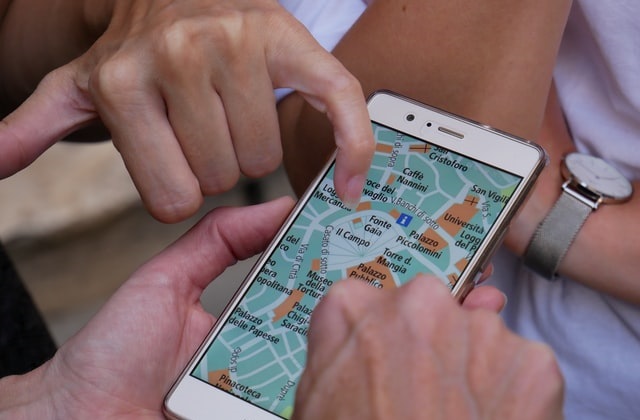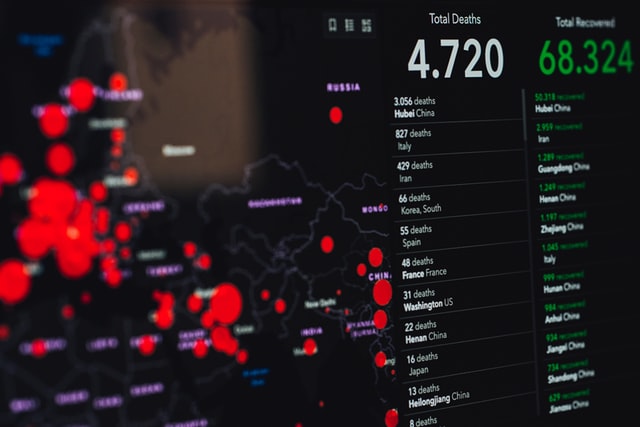Following on from earlier work on ‘mobile nationals’, a new customer segment can be defined as ‘transnationals’ or ‘transnational mobiles‘.
Today, people spend a substantial amount of time away from home and/or the office (abroad in some cases), such as business people on the move, some holiday makers, students, and immigrants. Their distinguishing feature from the resident or non-mobile populations is the ‘movement’ in their routines. Transnationals’ behaviour is likely to be characterised by or influenced by multiple reference points such as places of origin, destination, transit, and diaspora cultures distinguishing them from the non-mobiles.
While transnational migration involves about only three percent of the total world population, there is a significant variation in its occurrence and importance across different countries and continents. In Europe, for example, it covers almost 9 percent of the total population, while it is between 13 and 15 percent in North America and Oceania (UNDP, 2008). Travel statistics often indicate much larger figures. For example, the UK statistical office reported 30 million person trips by foreign citizens and 64 million person trips by British citizens were made in 2005 (ONS, 2006). These people travelling around the world purchase products and services while they are on the move and at their destinations. A large portion of them are expected to be tourists, but sizeable portions are composed of business people, highly skilled professionals, and immigrants of various kinds (e.g. seasonal workers, students, asylum seekers, refugees, etc). Their needs and wants, thus expenditure patterns, are expected to be relatively different from their fellow citizens left behind in the origin country and those in their destination(s). Despite a paucity of statistics, those cross borders frequently are a large customer segment that includes about 200 million migrants alongside others who are mobile internally or temporally. Holiday makers and professionals working in multiple or far away locations should also be considered. We term these as ‘transnationals’ because of their links, networks and complex reference points in more than two countries. This applies to temporarily relocated professionals and students as well as immigrants. These people establish links with their friends, families, partners in diasporas (e.g. Turks in Western European countries).
Today’s world is increasingly mobile and more and more people are living outside the countries where they born; more and more living in transnational settings; more and more are studying abroad; and more and more take holidays abroad. These groups can be segmented based on their causes for international mobility, lifestyles, work styles relating to the particular needs and wants of each group. One could argue that they are, for example, more likely to spend more on mobile communication services than others who pursue more settled lives.
Transnational mobiles are likely to move longer distances, cross borders into (a) a new jurisdiction, a new country with separate rules and regulations, a new political environment, (b) a new economic environment and (c) possibly a different technological environment too, (d) a new socio-cultural environment. Examples for these could be: (a) legality regarding the purchase and consumption of certain products such as alcohol and tabacco in different countries, (b) differences in inflation and interest rates which is likely to affect buying and saving behaviour, (c) different telecommunications infrastructure (e.g. availability of 3 G), and (d) roles, customs, values and traditions (e.g. gender roles in different countries).
A systematic classification of the ‘transnationals’ may include the following categories though this is not exhaustive:
Mobile professionals employed by transnationals or organisations with international operations and links. Executives, consultants, IT consultants, engineers, high ranking government officials, and professors could be considered amongst this group. These people live abroad for relatively short periods of up to six months or a year; often working on projects or with clients, providing training, giving lectures and consulting. It is expected many of them travel alone or with colleagues but not with families. In fact, many of them might be single. It is likely to be a sizeable segment. According to the latest Barclaycard Business Travel Survey (2006), in the last decade, the number of business travel miles of leading executives increased 32 per cent, which has implications for the mobile technologies supporting these activities while creating opportunities for marketers (Faulconbridge and Beaverstock, forthcoming). Another recent study claims transnational corporations are keen to source within their internal labour pools and thus move staff around the world (Millar and Salt, 2008a). In the UK, business travel trends are rapidly growing. According to ONS (2006) Travel Trends, the numbers of overseas residents visiting the UK and of the UK residents going abroad for business purposes have almost doubled in the last two decades. On average the length of stay is around 5 nights amongst the 8.5 million UK residents going abroad and the 8 million overseas residents visiting the UK. The size of this market is significantly large and expected to be lucrative.
Students spending a term or a year abroad enrolled in programmes abroad are another group. Millar and Salt (2008b) report over 300,000 international students are in higher education in the UK benefiting the economy in excess of £5 billion. Perhaps, university students and young researchers share characteristics (hence needs and wants) with mobile professionals. For instance, with some variation by disciplinary field, those transnationals constitute between 24 to 59 percent of research staff in the UK (Smetherham et al., 2008). For young mobile people this often means living in shared houses and also not having land lines, private TVs and so on. One may expect then, that they will be more inclined to use the internet, with mobile broadband on laptops and other mobile devices such as phones and PDAs.
Immigrants are composed of various subgroups based on their motivations, patterns and mechanisms of migration which are heavily determined by the admission regulations of the destination countries as well as sending contexts. Some of high skilled migrants are similar to business travellers and professionals of transnational corporations. Overseas medical doctors and IT specialists constitute a large portion of staff in these professions in advanced countries. For instance, in New Zealand, more than a third of doctors have overseas qualifications (MOHnz, 2008) while in the UK: about a quarter of consultants have overseas qualifications (Goldacre et al. 2004).
Refugees are a sub-category of immigrants. This group is often smaller than others and can be counted among settled immigrants as they often have equal rights to citizens. However, like other immigrant groups they do maintain a transnational life style where connections with the country of origin and other Diaspora communities are maintained. Thus their consumption patterns are very likely to be similar to other immigrant groups.
Asylum seekers are a heavily regulated group in most countries. With limited entitlements, they often live in purpose built centres and/or are subject to close monitoring. Unable to pursue a ‘normal’ life style, these, for example, are expected to be dependent on mobile communication services. They are also likely to have closer connections with their countries of origin and as there is a chance of immediate and sudden return to home (Gibney, 2008). Although a sizeable population across Europe, high rejection rates, make it a temporal group.
‘Undocumented’, ‘illegal’, or ‘clandestine’ migrants are another difficult to target category, as by definition, this group is unidentifiable and difficult to estimate in terms of market size. Related to this group, there could also be visa-overstayers and working holiday makers.
All these transnationally mobile groups are likely to be found in larger cities and towns, particularly where established sizeable immigrant minority populations exist, such as in London, New York, Paris, Berlin and Istanbul, thus making them accessible and targetable. Comprising at least 10-12 percent of total populations in Western Europe, these groups are significant to consider, particularly for mobile marketing.
This is an excerpt from the Paper presented to Academy of Marketing Annual Conference, Putting Marketing in its Place, Leeds Metropolitan University, Leeds Business School, 7th to 9th July 2009. www.am2009.org



